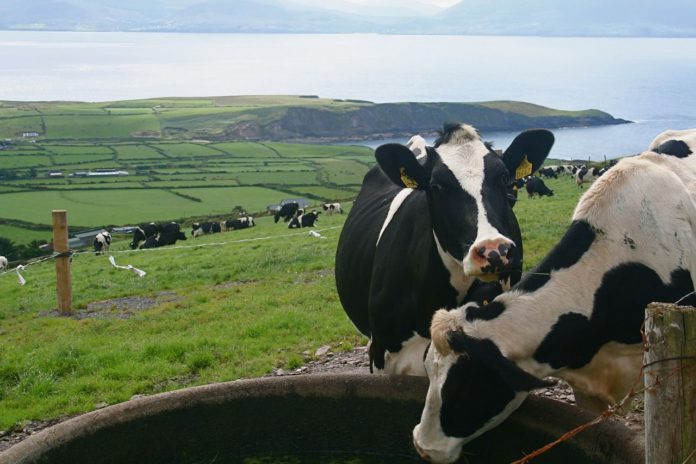Dairy Farm Advice
Emphasis is now switching from grazing and silage to planning for winter housing and the feeding period, transition cow management, new-born calf care and housing requirements, as autumn calving gets underway on several dairy farms.
Gavin Duffy, a CAFRE dairy development adviser, says the importance of management of the dry cow with particular emphasis on the period 3 to 4 weeks pre-calving has been “well documented”.
In brief, he says, “the higher the milk yield potential of the cow, the greater the challenge and as many diseases are interlinked, some cows can often suffer multiple problems”.
He explains that you can often trace back a “high” incidence of the following to dry cow management:
- Milk fever;
- Retained cleanings;
- Stomach problems in freshly calved cows can very often be traced back to the management of the dry cow.
He recommends:
- Drying cows off at the same BCS that they calve down at, so normally around 2.75- 3.0;
- Score your herd 8-10 weeks before the target dry-off date so you can take corrective action;
- Keep cows in the early dry period outdoors in late summer/autumn on low grass covers, provided the condition score is close to target. Keep cows outdoors in late summer/autumn on low grass covers. Supplement if necessary with an additional forage such as silage or straw;
- House cows in the close-up to dry period to meet specific nutritional needs.
Factors for practical management of the close-up dry cow group:
- Constant availability of fresh, clean water, with adequate water trough space per cow or one fast drinker per 10 cows;
- Avoid overcrowding of the pre-calving group;
- Avoid moving cows close to calving wherever possible. Moving causes stress, delays calving and reduces feed intakes even further. If moving cows between groups move in at least pairs;
- Cows housed in cubicles need extra large and comfortable beds with similar attention to detail such as hygiene as that for the milking herd;
- Allow plenty of feed space for pre-calvers, at least 75 cm per cow (Holsteins) and 24 hours/day of stress-free access to fresh, palatable feed;
He stated that a “well thought out” management protocol for the care of the cow at calving and the new-born calf is an “essential requirement” on the modern dairy farm, especially where there may be several different personnel involved.
He recommends providing adequate numbers of clean, disinfected and well-bedded calving pens, with good health and safety management being a “key” consideration.
Preparing for calving:
- Equip individual pens to allow animals at calving to be easily restrained;
- Have good lighting;
- Have facilities for easy restraining;
- Clean out calving pens regularly – wash well, disinfect and rest before reuse;
- Prepare equipment and ensure you have sufficient stocks: A calving jack and clean ropes, essential medical supplies including calcium /magnesium bottles in case of suspected milk fever cases, a supply of iodine to treat the calf’s naval and a back-up of good quality colostrum and feeding equipment.
Minimise health problems
He continues: “Attention to detail during the latter part of the dry period and around calving will help prepare the autumn calving cow for her subsequent lactation and minimise potential production and health problems.”
“Planning should include a review, not only of nutrition but also accommodation, health, cow welfare with a particular emphasis on health and safety.”
“Time spent servicing equipment, acquiring essential supplies and developing critical management protocols will pay dividends.
“Whilst careful management around calving will minimise potential problems, it is good practice to be well prepared for every eventuality,” he concluded.
Other farming news:





